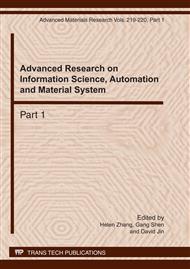p.458
p.465
p.470
p.474
p.479
p.483
p.487
p.492
p.496
A Text Mining Analysis of the Biomimetics Research Trend (2000-2010)
Abstract:
In recent years, much research has been devoted to the biomimetics research; however, few have deployed the study of the research trend. In fact, grasping the research trend is imperative for enterprises and researchers. The study aims at analyzing the trend change of biomimetics research from 2001 to 2010. The contribution of the study includes the following two points. First, the study has found the shift of the biomimetics research from shifts from “scaffold” and “engine” related issues to the focuses of “surface” and “structure”. Second, the study finds a new way of literature survey by using the text mining method in order to explore the trend change.
Info:
Periodical:
Pages:
479-482
Citation:
Online since:
March 2011
Authors:
Keywords:
Price:
Сopyright:
© 2011 Trans Tech Publications Ltd. All Rights Reserved
Share:
Citation:



